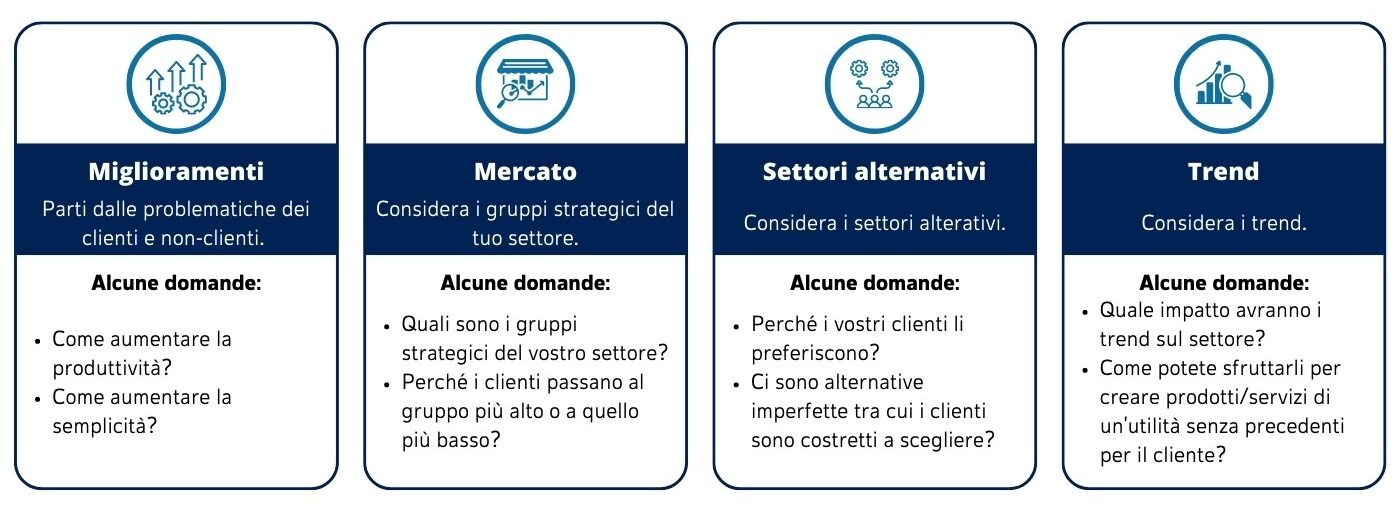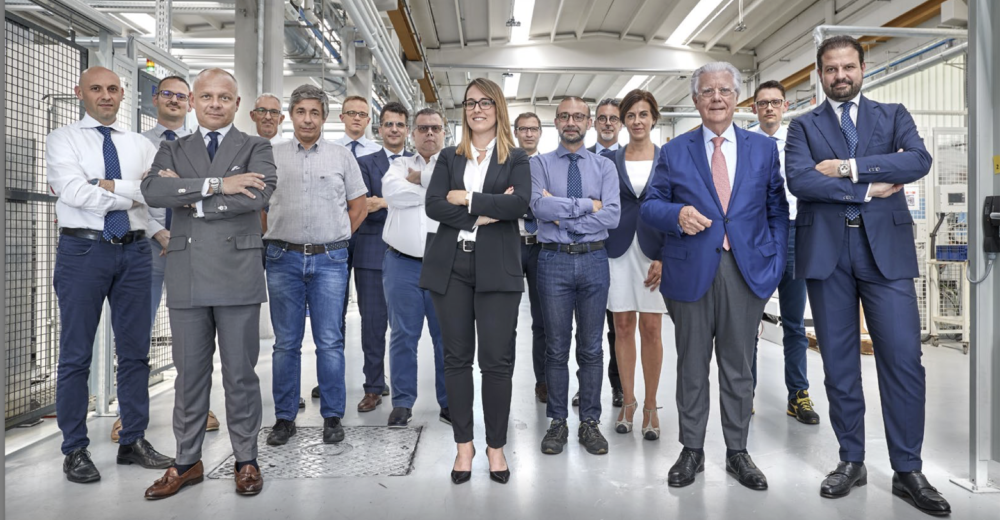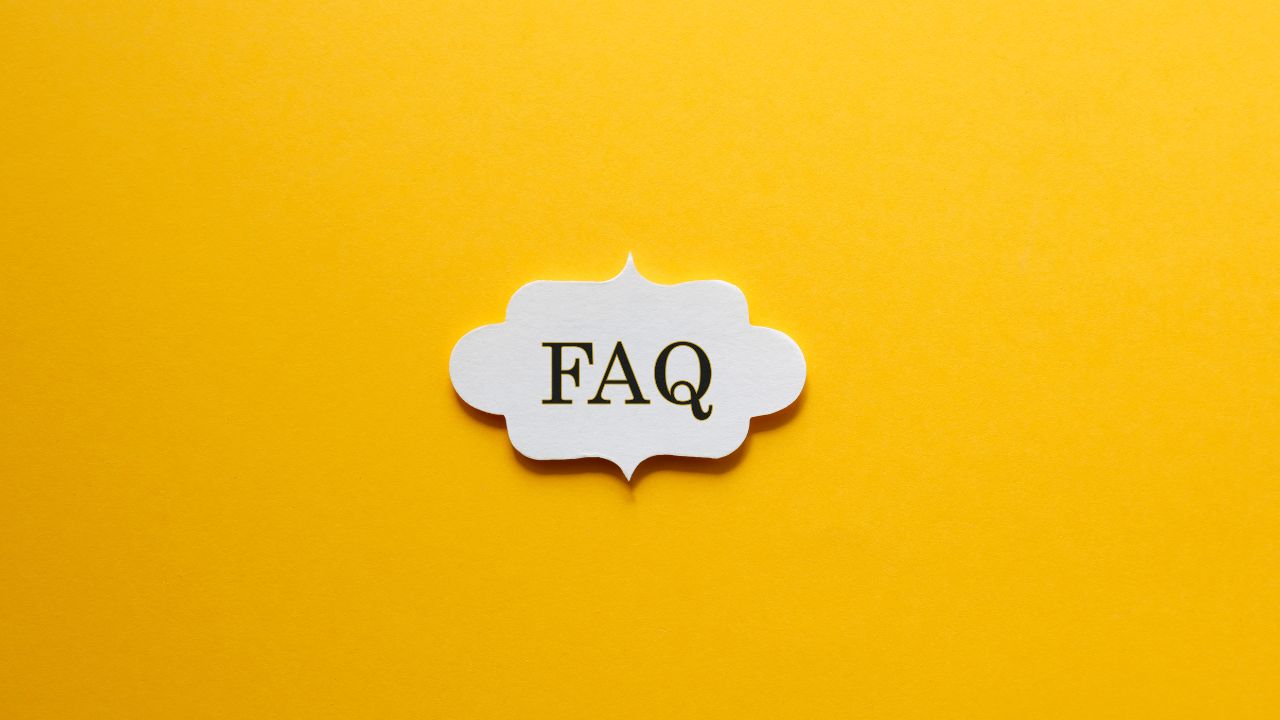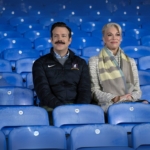How to stimulate creativity in the company

Indice
Steve Jobs said that “Creativity is just connecting things.”
Easier said than done! When you try to stimulate the creativity of people in the company, the results can be disappointing.
This is because to stimulate creativity it is necessary to “turn off” rational thinking and abandon the patterns that until now have proved successful so that you can make new connections. In other words, we must be able to free ourselves from those behaviors and ways of thinking that have led us to achieve the results we have obtained to date! The challenge is obviously arduous. To obtain results, it is necessary to stimulate creativity with guiding questions useful for generating high-impact innovation opportunities.
In this article we offer you tools and paths for generating creativity in the company.
Rational thinking and creativity
The research conducted between Queen Mary University and Goldsmiths University on 60 individuals, published in the journal Scientific Reports, has shown the effects of transcranial stimulation (with direct current) on people’s creativity. The experts, by placing electrodes on the participants’ heads, tried to suppress or hyperactivate the left dorsolateral prefrontal cortex, the area of the brain responsible for rational thinking. The researchers compared stimulation with a placebo (fake, non-existent). It has been observed that stimulation that suppresses the left dorsolateral prefrontal cortex ignites creative ability and improves performance in solving difficult problems that require thinking outside the box. On the contrary, by hyperactivating that part of the cortex one becomes less creative.
The researchers also noted that when creativity is unleashed, one becomes at the same time less able to solve classic problems based on old rules and reasoning.
In other words, to increase our creative capacity we should inhibit our capacity for rational thinking to experiment and embrace new patterns.
How to help your people turn off rational thinking and embrace creativity?
The answer to this question lies in three elements:
- Explorations
Explorations “turn off” rational thinking by guiding people to ask themselves the right questions to explore new opportunities for innovations with a high impact on the market.
In fact, explorations are based on the idea that creativity can be guided and structured through a series of questions that lead to thinking differently than how it has always been done, to ignite new paths of reasoning.
Over time we have developed several exploration paths with related guiding questions, useful to “turn off” rational thinking and to open new opportunities for innovation.
Here are some examples:

- Working in small groups
Working in small groups reduces the problems of discussions in large teams but above all helps to “turn off” rational thinking by introducing different points of view and sometimes opposed to one’s own.
Working in small groups to develop ideas is like the concept of sparring partners in the world of sports. We need to build small groups that can discuss their ideas with each other, even criticize them, and bring different points of view to stimulate creativity and deepen ideas.
Some practical tips for developing effective small groups:
- Composed of a maximum of 3-4 people
- Representatives from different functions
- They work on their own ideas or ideas that excite the members/participants
- They must have autonomy to propose the solutions they deem most appropriate
- At least one person in the group has the necessary skills to further develop the proposal
Developing an idea for the next steps helps to “turn off” the rational brain thanks to the possibility of postponing questions and issues closely related to how things work today in the company. In the early stages of development, you can say to yourself: “Suppose we are able to do this. What would it be like…” thus freeing people’s creativity.
Excessive thinking and reasoning based on past patterns could inhibit innovation. In this case, some ideas which are particularly far from the current way of thinking about business may be discarded before they have been developed. Or they can be launched in a «depowered» way because it has progressively adapted to the current logic and organization. To avoid these problems, it is appropriate to reserve spaces where people can also work on the ideas that most challenge the organization, processes and current beliefs.
In this respect, it is therefore appropriate to have very loose idea selection filters at the early stages of the innovation process to be able to. Instead, they become more selective as ideas develop and the information needed to evaluate them properly is acquired.
To avoid wasting time and resources on proposals which are not of interest to the firm, it is desirable to define precisely what level of proposal development is allowed.
For example, three steps could be envisaged in the development of ideas:
- Ideas
- Solution Brief
- Concept Paper
For each level of development, it is useful to define in detail the information needed to go further.
Defining the minimum level of depth required to develop an idea from one level to the next is crucial to balancing the possibility of exploring different ideas and the effort required for such exploration.
Articolo a cura di:

Gabriele Colombo
Know How & People Development
He has developed his skills especially in the field of innovation according to the logic of design driven by applying the concepts in the area of research and development in companies of international character. He was responsible for the definition, planning and execution of research and consultancy programmes related to the world of innovation and continuous improvement; His experience is added to the role of teacher of Project Management and Innovation Management in courses dedicated to business executives at the School of Management of the Politecnico di Milano.
Partner of Lenovys since 2021.
Read more
Prossimi eventi










